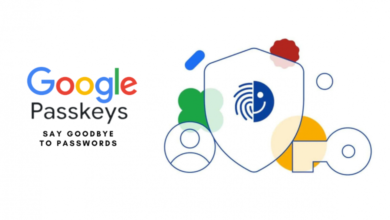
How to Protect Your Internet of Things (IoT) Devices
In today’s hyper-connected world, the Internet of Things (IoT) revolutionises how we interact with technology. From smart homes filled with connected gadgets to IoT-driven healthcare devices and industrial systems, these innovations are making life more convenient and efficient. However, with billions of devices connected to the internet, we’re also opening the door to new and significant cybersecurity risks.
As part of Cybersecurity Awareness Month, we’re focusing on the role of IoT in our daily lives and, more importantly, how we can secure these devices against potential cyber threats.
What is IoT?
The Internet of Things (IoT) refers to the growing network of internet-enabled devices that can communicate with each other, share data, and automate processes without human intervention. This includes everything from smart thermostats and security cameras to connected medical devices and industrial machines. IoT technology has the power to transform industries, make cities smarter, and improve our quality of life.
However, as we integrate more IoT devices into our homes and businesses, we must remain vigilant. Each new device connected to the internet can be a potential entry point for hackers if it isn’t properly secured. Cybercriminals are becoming more sophisticated, targeting IoT vulnerabilities to steal data, launch attacks, or even take control of critical systems.
The Importance of IoT Security
As convenient as IoT devices are, they often come with built-in security weaknesses. Many devices are shipped with default passwords, minimal security features, and are rarely updated after installation. This makes them prime targets for hackers. In fact, according to recent reports, unsecured IoT devices have been linked to large-scale cyberattacks, including Distributed Denial of Service (DDoS) attacks that can take down entire websites or networks.
With the number of IoT devices projected to surpass 75 billion by 2025, the need for IoT security is more pressing than ever.
Also Check
How to Secure Your IoT Devices
To help protect your IoT devices from cyber threats, here are four key steps to follow:
1. Change Default Passwords
Many IoT devices come with default usernames and passwords that are easy for hackers to guess or find online. Always change these default settings immediately after installing the device. Use strong, unique passwords for each device and consider using a password manager to keep track of them securely.
2. Update Firmware Regularly
Manufacturers often release updates to fix security vulnerabilities or improve device performance. However, these updates are useless if they aren’t installed. Make sure to regularly check for and apply firmware updates to keep your devices secure. Some devices offer automatic updates—if so, enable this feature.
3. Use Secure Networks
Ensure that your IoT devices are connected to a secure Wi-Fi network with strong encryption (WPA3 is the current standard). Avoid connecting them to public or unsecured networks, which can make it easier for attackers to intercept your data. For additional security, you can set up a separate network for your IoT devices to isolate them from your main devices, such as computers and smartphones.
4. Monitor Device Activity
Keep an eye on your IoT devices for any unusual behavior, such as unexpected data usage or unknown devices connecting to your network. Many routers offer the ability to monitor connected devices in real time, helping you detect potential intrusions. If you notice anything suspicious, take immediate action by disconnecting the affected device and changing its settings.
Why IoT Security Matters
The convenience of IoT comes with increased responsibility. With cybercriminals continually searching for weak points to exploit, securing your IoT devices is critical to protecting your personal data, maintaining privacy, and ensuring that your smart devices function safely.
In industries like healthcare and manufacturing, IoT security becomes even more crucial, where compromised devices can disrupt vital services or cause significant damage. Whether at home or work, proactive security measures can prevent cyber threats and ensure that your connected world remains safe
The Internet of Things is rapidly becoming a cornerstone of modern life, enabling smarter homes, businesses, and cities. As we integrate more of these devices into our daily routines, we must prioritize security to protect ourselves from emerging threats.
Remember, every connected device is an opportunity for innovation, but also a potential vulnerability. Let’s stay secure and embrace the future of technology with confidence.
Stay ahead of the curve, and protect your connected world!









